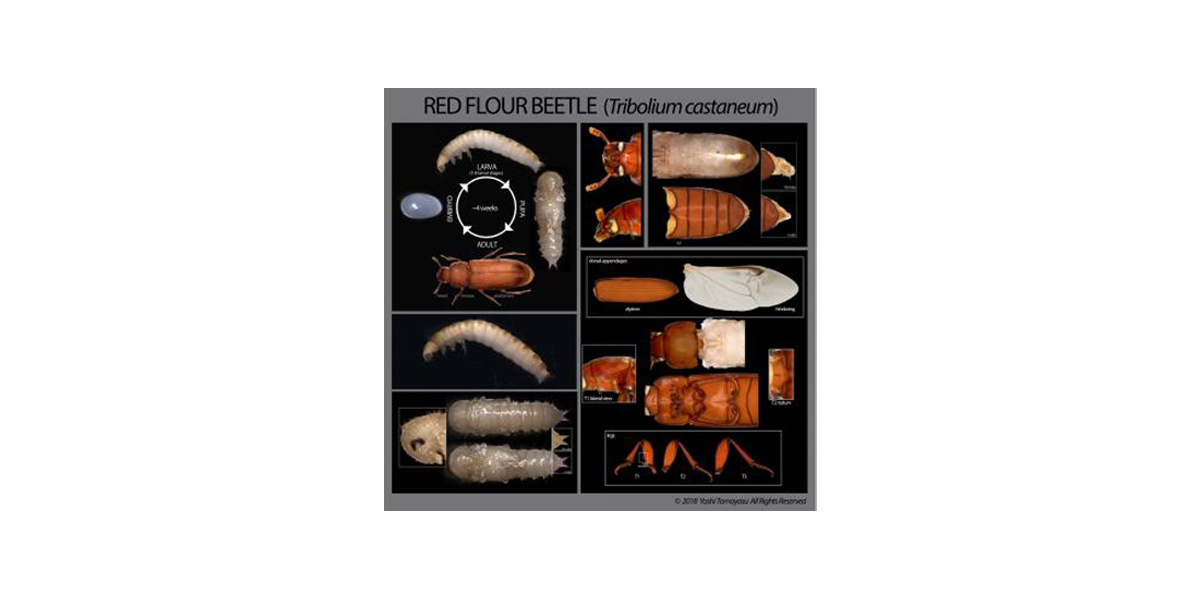Exploring the evolutionary origin of insect wings from an evo-devo perspective
Special BSB and CBA Seminar exploring evolution by Yoshinori Tomoyasu Department of Biology, Miami University
Speakers
Event series
Content navigation
Description

Special BSB/CBA Seminar
Although the immense success of insects can be attributed to various traits, the wing is the signature character of this clade, which has allowed insects to explore a variety of niches via powered flight, and has also served as an evolutionary medium for the emergence of new traits (such as camouflage, mimicry, armoring, and communication). So, considering the significance of wings during insect evolution, it is somewhat surprising that the origin of this evolutionarily prominent structure is still a hotly debated mystery.
Through investigations in the red flour beetle, Tribolium castaneum, we have previously obtained functional evidence supporting the idea that the insect wing has a dual evolutionary origin, having evolved from the merger of two distinct tissues (i.e. tergal and pleural tissues). To further evaluate this hypothesis from an evo-devo perspective, we have been analyzing the development of wing-related tissues in a wide taxonomy of organisms, through which we have made several interesting findings that can help decipher the origin of insect wings. For example, in the crustacean Parhyale, our expression and genome-editing analyses have revealed that the evolution of a wing-like gene network precedes the emergence of insect wings, and this network operates in two distinct crustacean tissues. In Tribolium, we found that the formation of ectopic wings induced by homeotic transformations in otherwise wingless segments requires the merger of two separate groups of tissues. We also found that there are two lineages of wing-related tissues in the cockroach Blattella, suggesting that our findings in Tribolium can be generalizable. Furthermore, through an enhancer analysis in Drosophila and Tribolium, we identified several wing enhancers that are also active in terga or pleura, suggesting a shared transcription landscape between wings and these two proposed origin tissues.
In this talk, I will showcase these findings and discuss how our results support the idea that the insect wing is composed of two separate lineages of tissues (of tergal and pleural nature), and therefore further support a dual evolutionary origin of insect wings. In addition, I will also discuss a chromatin profiling-based strategy to identify transcriptional enhancers, which allows enhancer studies even in non-traditional insect models.
Dr. Yoshinori Tomoyasu is an Associate Professor in the Department of Biology at Miami University. His research interest revolves around understanding the genetic and genomic mechanisms underlying morphological evolution. Some of his research highlights include the finding of distinct Hox action between beetles and flies, uncovering the multiple co-options of exoskeleton formation during beetle wing evolution, and gaining new insight into the evolutionary origin of insect wings as well as establishing new protocols, eg. RNAi-based gene knockdown technique during post-embryonic development in insects. Currently, his research group is at the forefront of applying various modern genetic and genomic techniques, such as RNAi-based gene knockdown, transcriptome analysis via RNAseq, genome-wide chromatin profiling, and CRISPR/Cas9-based genome editing, to non-traditional model organisms.
Yoshinori's visit to Canberra is funded by the Centre for Biodiversity Analysis. Hosts: Maja Adamska (ANU) and Hermes E. Escalona and Adam Slipinski (CSIRO).
Location
Eucalyptus Seminar Room, Rm S205, Level 2, RN Robertson Building (46)
